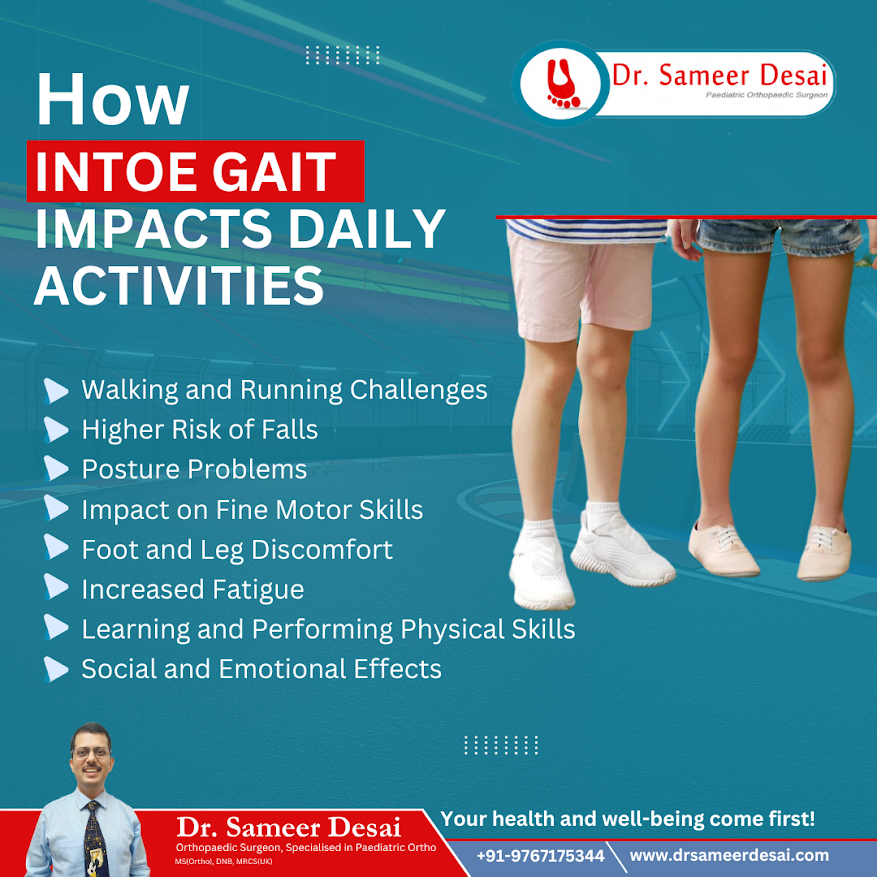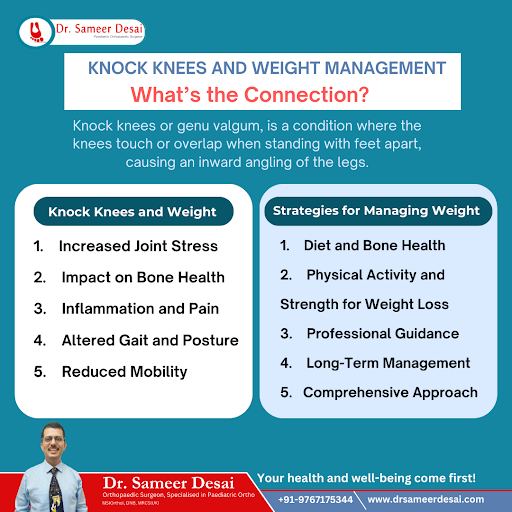How Intoe Gait Impacts on Daily Activities
Intoe gait refers to a walking pattern where a person’s toes point inward as they walk. This condition is often seen in children and can be due to various causes such as muscle imbalances, structural abnormalities, or developmental issues. In some cases, it may resolve on its own, but persistent cases might require medical evaluation and treatment. there following activities are impacts on daily routines. Consequences for daily living: Problem face for Walking and Running: Intoe gait can make walking and running feel awkward and unstable, potentially limiting participation in physical activities and sports. Foot and Leg Discomfort: The abnormal foot positioning can cause pain and discomfort in the feet and legs, making routine activities like walking or standing uncomfortable. Posture Problems: Intoe gait may lead to poor posture and alignment issues, causing discomfort during daily tasks and affecting overall body alignment. Impact on Fine Motor Skills: Coordination issues from intoe gait can make tasks requiring precise movements, such as writing or using small objects, more difficult. Social and Emotional Effects: Children may feel self-conscious about their gait, which can affect their social interactions and confidence, making them hesitant to engage in group activities. Amplified fatigue: The additional effort required to manage an abnormal gait can lead to quicker fatigue, impacting daily stamina and energy levels. Higher Risk of Falls: The imbalance associated with intoe gait can increase the likelihood of falls and injuries, especially during activities that require stability. Gaining and demonstrating physical Abilities: Activities that need good coordination, such as sports or dance, may be more challenging, affecting a child’s ability to learn and enjoy these activities. Conclusion: Proper treatment and management of intoe gait can help improve these areas and enhance a child’s ability to engage in and enjoy everyday activities. Dr. Sameer Desai offers specialized treatment for intoe gait, focusing on tailored approaches to address the condition effectively. With his experience in pediatric orthopedic care, Dr. Desai ensures that each treatment plan is customized to the child\’s specific needs, aiming for optimal improvement and comfort.
How Intoe Gait Impacts on Daily Activities Read More »


